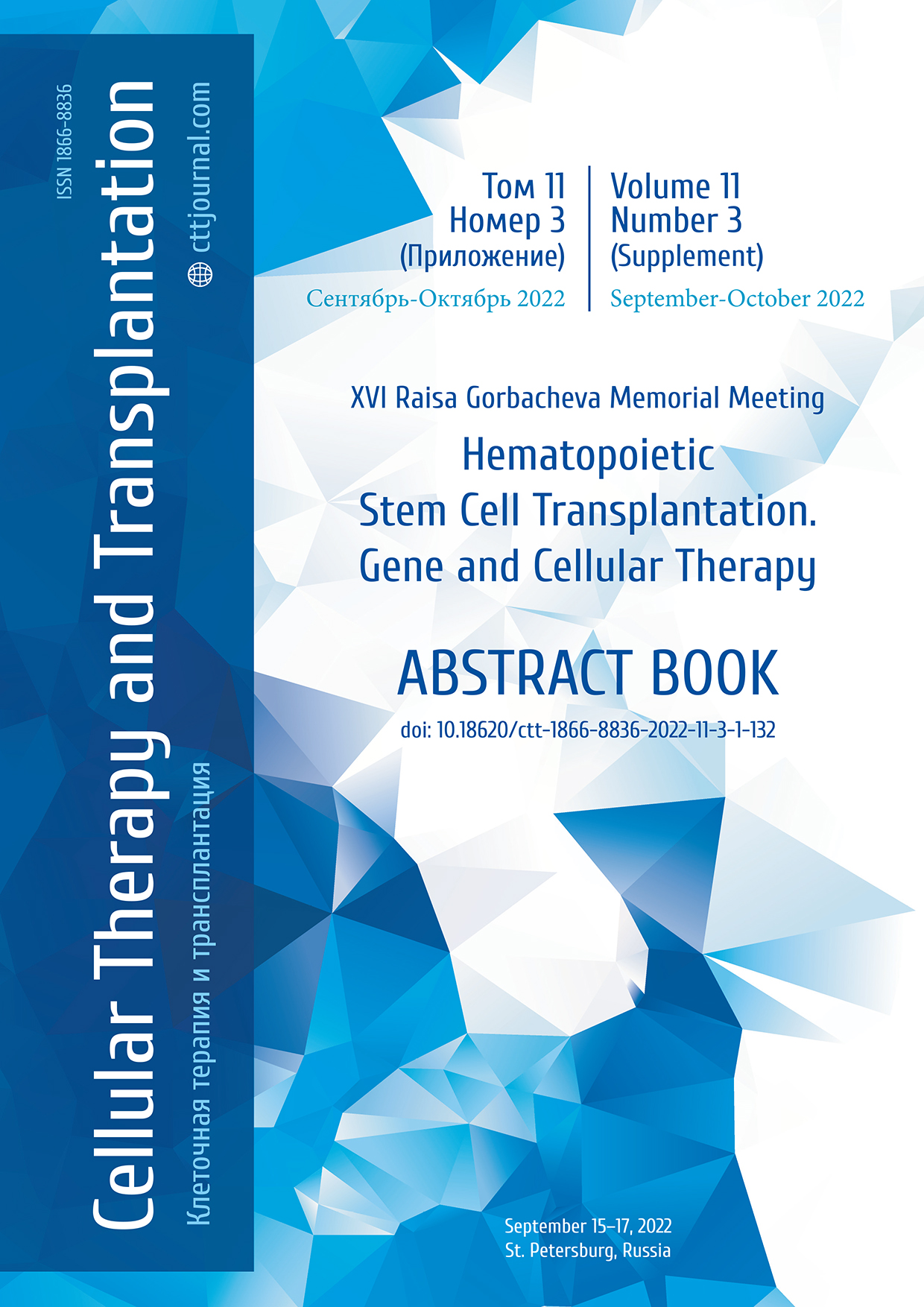IC-03. Combination of bendamustine and cyclophosphamide in graft-versus-host disease prophylaxis in refractory myeloid neoplasms: promising approach to augmentation of graft-versus-leukemia effect
Ivan S. Moiseev, Yulia Yu. Vlasova, Elena V. Morozova, Olga S. Epifanovskaya, Ksenia S. Afanaseva, Anastasia V. Beynarovich, Dmitry K. Zhogolev, Mikhail M. Kanunnikov, Yulia A. Rogacheva, Tatiana N. Rudakova, Nikita P. Volkov, Sergey N. Bondarenko, Alexander D. Kulagin
RM Gorbacheva Research Institute, Pavlov University, St. Petersburg, Russia
Contact: Dr. Ivan S. Moiseev, phone: +7 (921) 796-19-51, e-mail: moisiv@mail.ru
Summary
Efficacy of salvage allogeneic hematopoietic stem cell transplantation (HSCT) in myeloid neoplasms not responding to chemotherapy and targeted drugs remains limited. Our group have recently demonstrated augmented graft-versus-leukemia (GVL) effect with substituting cyclophosphamide with bendamustine in graft-versus-host disease (GVHD) prophylaxis regimen (Moiseev et al., TCT, 2021). Nonetheless, this original regimen was associated with significant toxicity due to poorly controlled cytokine release syndrome (CRS). To overcome this limitation we conducted a pilot single-center study of GVHD prophylaxis with a combination of cyclophosphamide with bendamustine in refractory myeloid malignancies.
Materials and methods
The prospective (NCT04943757) Phase I single-arm study evaluated GVHD prophylaxis regimen consisting of bendamustine 50 mg/m2/day on days +3,+4, cyclophosphamide 25 mg/kg/day on days +3,+4 (PTCBCy), tacrolimus 0.03 mg/kg from day+5 to day+100 and mycophenolate mofetil 30 mg/kg/day on days 5-35. Patients received reduced intensity FB2 or FB3 conditioning according to performance status. Main inclusion criteria were: diagnosis of acute myeloid leukemia (AML) or myelodysplastic syndrome (MDS) or blast crisis of chronic myeloid leukemia (CML) or other myloid neoplasms (MPN) with high tumor burden, no hematological response to previous therapies, absence of severe organ dysfunction. Thirty patients were included into the interim analysis. The median age was 42 years (range 18-69). AML was an indication for HSCT in 22; MDS, in 6, and 2 patients had CML and MPN.
Results
Median follow-up at the time of the analysis was 5 months (range 2-18). Engraftment was documented in 87% of patients. Median time to engraftment was 18 days (range 12-35). Complete response (CR) was achieved in 83% of patients and 73% were minimal residual disease (MRD)-negative. With the limited follow-up, overall survival was 67% (95%CI 43-82%), while event-free survival (including graft failure as event) was 36% (95%CI 14-58%). Disease progression or relapse was the major cause of failure and was documented in 55% of patients (95%CI 26-76%). On the other hand, the combination regimen was associated with low toxicity and GVHD incidence. The cumulative incidence of Grade II-IV acute GVHD was 3% and observed in one patient. Additionally, 5 patients had grade 1 acute GVHD. In landmark analysis at 100 days, the incidence of chronic GVHD was 24% (95%CI 5-50%). Chronic GVHD manifested as liver overlap syndrome in the majority of these patients. CRS was documented in 20% of patients, with grade 4-5 in only 2 cases. Most common target of CRS was liver (17%), pancreas (10%) and kidneys (7%). CRS was effectively controlled by tocilizumab, ruxolitinib and high dose steroids in all cases, except of one patient. All CRS cases were associated with increased serum ferritin (median, 26400 ng/ml; range 12570-206500). Non-relapse mortality was 7% (95%CI 1-19%). Preliminary flow cytometry analysis demonstrated the same pattern of early immunological recovery, preservation of central memory T-cells and induction of tolerance by PD-1L positive monocytes as in the single-agent bendamustine study.
Conclusions
This pilot trial demonstrated that PTBCy combination prophylaxis provides the level of safety compared to conventional GVHD prophylaxis regimens with maintenance of GVL patterns. The study continues enrollment of patients.
Disclosure
The authors declare no conflicts of interest.
Keywords
Myeloid malignancies, allo-HSCT, graft-versus-host disease, posttransplant cyclophosphamide, posttransplant bendamustine.


